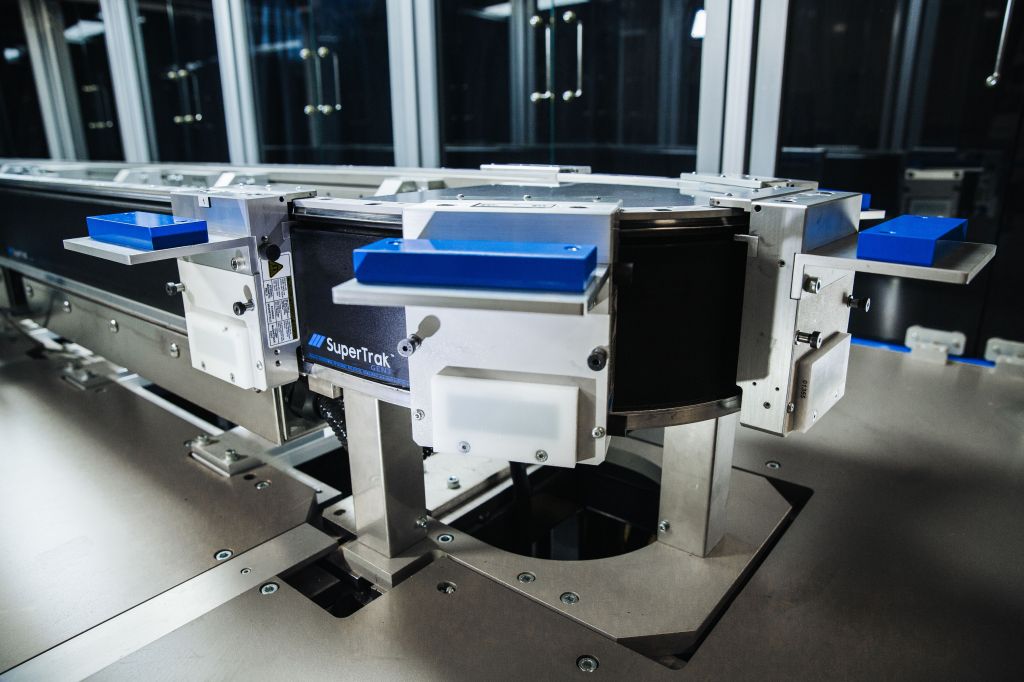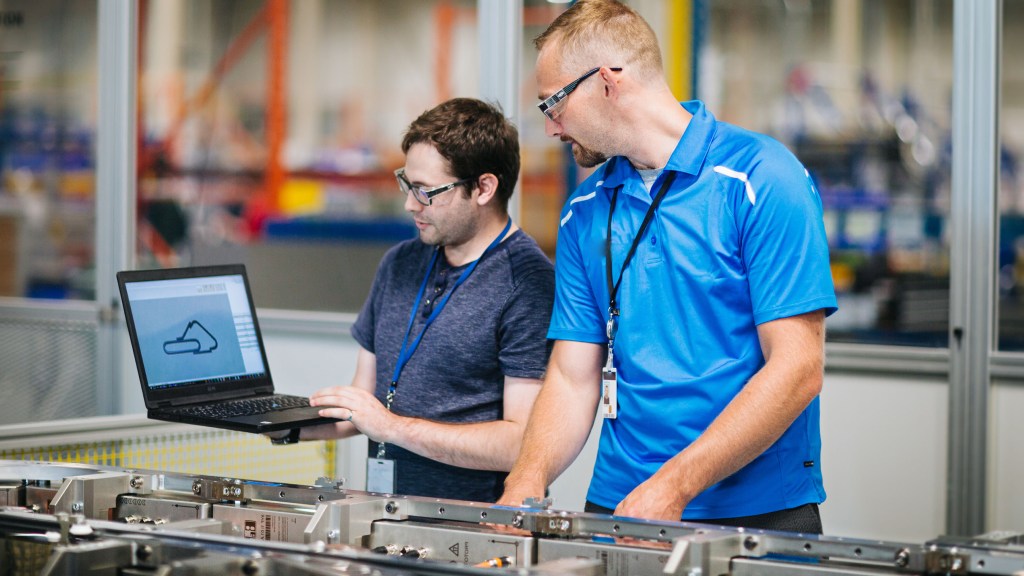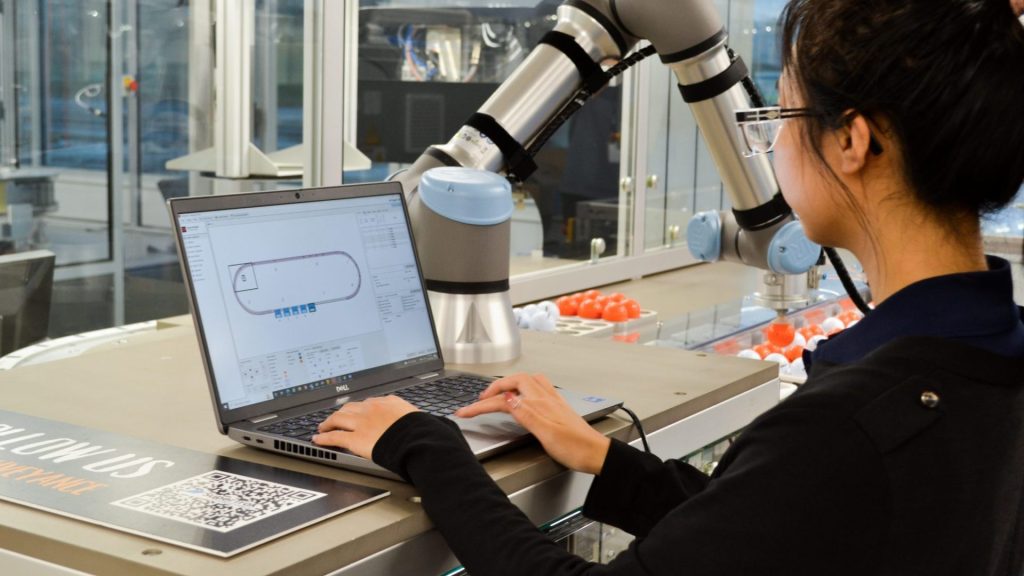
Industry 4.0 is a broad term that encompasses a vast number of innovations, improvements, and changes in approach that are progressing manufacturers toward a digital transformation.
Even for experts on the topic, it’s very difficult to know where to begin. The sheer volume of change that is encompassed within what is now referred to as the “4th industrial revolution” can be overwhelming. Many partners we work with express their desire to incorporate elements of “Industry 4.0” into their businesses but don’t actually have a good understanding of all the facets of Industry 4.0 and this makes it very difficult to know where to start.
More than merely a marketing buzzword, a deeper understanding of Industry 4.0 can help businesses embrace a digital transformation that looks to leverage IIOT data and insights to further optimize their manufacturing operations.
There are a number of guides and resources available to support this transition and I will try to reference some of our favorites in this version of “Around the Trak”.
Why industry 4.0
The “why” of Industry 4.0 is no different than other initiatives we take on in our business. Simply put, it is an opportunity to get better. But more than that, it is a strategy to improve market performance by increasing competitive advantage in the market served and/or driving organizational efficiencies.
The difference with Industry 4.0 and why it is described as a revolution is that unlike most incremental improvements we take on, when fully adopted, it has the potential to completely transform the way in which our business is done. But the idea of a total business transformation is why many companies have a hard time getting started.
We get lost in the broad and overarching end goal and hesitate to take a first step that is practical to our business today. To be successful with your implementation, focus on a clear, achievable scope, and build early momentum similar to our discussion in change management.
It is expected that those who effectively adopt a digital transformation strategy will outpace those that do not in growth. It is important to note that digital transformation opportunities exist in a variety of areas in business. Those that effectively adopt in their area of expertise fuel growth. Those that do not drive transformation, digital or otherwise, can be passed by, which is why there is an increasing amount of turnover in the Fortune 500 – change is accelerating.
Beyond the ‘why’, the ‘why now’ is equally important to understand while reviewing what type of changes to implement in our business. Industry 4.0 is enabled by broader technology trends in the world being adopted in manufacturing. As an example, the commercialization of smaller, faster processors has created new opportunities for networking and processing of data. Applying these technologies to standard manufacturing technologies and processes give way to a new approach. It also makes them more important to the business, which is one of the reasons for the increasing trend in this area.
But what is Industry 4.0 really anyway?
There are many descriptions and definitions of Industry 4.0, however, the one the SuperTrak team likes to use is, a centralized pool of operations data that can be used to make better (more informed) business decisions. In a broader sense, Industry 4.0 seeks to connect, centralize, and analyze all data across the complete value stream. This broader definition is more complex and can be more challenging for those seeking to learn.
The idea of a fourth industrial revolution was coined in 2015 by a man named Klaus Schwab. He introduced the idea to the world economic forum, speaking about a revolution that was fundamentally different than the three that preceded it. The idea is that new technologies were more rapidly becoming available and “are fusing the physical, digital and biological worlds, impacting all disciplines, economies, and industries…” For more information on the initial definition, Mr. Schwab has written a book as well. Intentionally oversimplifying the broader vision, my view is that the general idea is that:
Better Data = Better Decision = Better Outcome
The better data, better decisions, better outcomes statement appear simple enough, though in practice it involves many steps. To break it down, we need to be able to capture the right data then more importantly view and use the data in a meaningful way to inform our decisions. It is worth acknowledging that this step is not always easy, though research has shown that the effort is worthwhile as we are better off when we begin to rely on data in our decision-making.
How exactly can it help me?
Think about how many times per day you rely on “gut” feeling to make a decision. I’m not saying that following your intuition is always a bad thing, I believe that intuition is often a solid conclusion you haven’t learned to vocalize yet. What I am saying is that instinct, or gut-feelings, in combination with the data-driven decision has proved to be beneficial for decision-makers.
According to business.com, data-driven firms are 5% more productive and 6% more profitable than their gut-trusting competitors.
For those that I speak with on the topic, we’d all like to have the data to back decisions, it is just not practical sometimes. The vision of Industry 4.0 and a completely connected value stream is to eliminate this impracticality.
The goal of this industrial revolution is to allow for one, consolidated source for operational data. Imagine a world where the production manager didn’t have to adjust the production schedule due to an expedited request, it just happened. Or one where the supply chain manager knew a delivery truck would be late due to incoming weather the day before. This is the potential of Industry 4.0 and real examples of implementations we’ve observed in operation.
How to get started with Industry 4.0
As I’ve alluded to in the past, change of any kind is hard for a variety of reasons and an entry into the fourth industrial revolution is no different.
The first step is to be very clear on your “why”.
Are you seeking to improve efficiency? Find a new path through a seemingly insurmountable issue? Eliminate downtime on a process? Being clear on your “why” will help you to define what success looks like in your business, then attribute metrics to the initiative. From the metrics, you can build a business case and move forward.
Some considerations while building out your plan:
- I often use the term don’t try to boil the ocean. What is means in this context is that Industry 4.0 is a big idea (it is a revolution for a reason), don’t try to take on the entire value stream in one step. The entirety of Industry 4.0 is a big idea but that doesn’t need to be, and likely shouldn’t be, your starting point. Select a part of the process, perhaps a single station or production cell, that will be most impactful to the business. It may be the part of the line that is down far too often or one production cell that executes the most critical part of the product offering.
Choose a practical scope of work for your team and then build momentum from there.
- Confirm that you have the infrastructure that you need. Implementations can get held up by relatively simple items like not having Wi-Fi coverage in the plant or enough data storage for an influx of new information. The IT infrastructure is an important and often straightforward part of successful implementation, but it does take deliberate thought and planning.
- Further educate yourself and your team along the way. The area of your business that would benefit the most from a stronger data backing is likely known to you. What you specifically need will be unique to your business and reading several industry-specific articles and blogs will help you as you take the first step. As always, there are strategic partners that can support your implementation and I recommend that you leverage them.
There are a number of surveys that can help assess your digital readiness transformation, as well as compare you to like-sized and focused companies. This survey from Impuls is one of my favorites because it provides tangible actions you can take depending on the input provided through the survey.
The role of Automation in Industry 4.0
Automation, both hardware and software are critical to a world-class implementation of Industry 4.0. It is critical because automation is both driven by data acquisition and is also instrumental in the processing of data. With the influx of data, we need to be able to process it in order to make it valuable. This is called turning data into information and models to analyze the data are needed to do so.
Humans can typically create one or two good models a week; machine learning can create thousands of models a week. –Thomas H. Davenport, Analytics thought leader excerpt from The Wall Street Journal
When getting started, the important questions to ask yourself are:
- What data is most important to my operations?
- How can automation help me in that area?
For the design, integration, and refinement of processing equipment, the SuperTrak team believes the part flow data is the most critical aspect when driving toward a centralized operational data model.
The reasoning is that material flow data is more easily acquired, and while not perfect, gives a very high fidelity understanding of the overall automation process.
Start with your Material Flow
Taking the example to a plant level, if you know where every part (or processing batch) of parts is within the process, you would have a strong understanding of processing times and, therefore, process bottlenecks in the value stream. Focusing in on an assembly cell, you can get the same understanding without needing to understand what is actually happening in the process itself:

This is important because you may have a process that is difficult to outfit with sensors to capture data automatically. That may be an older piece of equipment or a step that varies significantly based on SKU, or for any other variety of reasons.
Making your material flow smart provides us with:
- Uptime
- Downtime
- Inventory location
- Units produce / throughput
- Cycle times per stop
- Quality (if transport to inspection/defect is also tracked)
Material flow data is a powerful tool for entry into Industry 4.0 as well as process and automation design in general. The need for not only data but information within an Industry 4.0 implementation is paramount to its success and I believe that material flow data is the most straightforward way to provide high fidelity information throughout the value stream.
A SuperTrak Conveyance™ simulation offered through integrated TrakMaster™ software is so powerful early in the automation design lifecycle because it serves as a validation step before detailed design work. The same principle is true within a process that has people moving products manually or with a forklift, packages moving through a logistics center, or AGVs moving products around a facility.
One of the most interesting challenges of the current industrial revolution is that we are 5 years into it and it is still difficult for many to have a definition of what it means to their business. I think this is because the definition of Industry 4.0 and its success will vary depending on the goals of the business.
I always come back to the goal for manufacturers, and that is making our processes more efficient so that we can better serve our customers. Industry 4.0’s role in that, is to provide better data for better decisions by centralizing our operations data in one place.
There are many companies on the leading edge of this revolution. The ideas shared in this blog and many others are not imagined, which should be exciting to some but maybe a little unnerving to others. That is to be expected about major changes though. I will close this version of Around the Trak with one of my favorite quotes because I believe it is at the heart of what drives us to pursue revolutions in the first place:
“You never change things by fighting against the existing reality. To change something, build a new model that makes the old model obsolete.” – Buckminster Fuller
Like what you read? Be sure to join us for ATS’s virtual automation expo on December 2nd & 3rd for live sessions and interactive webinars from other automation thought leaders. REGISTER HERE!








